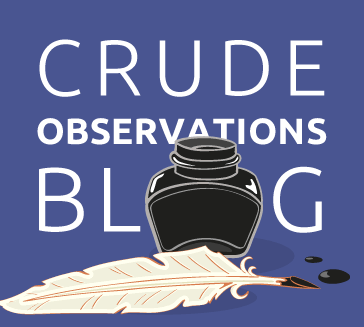Given my well-documented struggles with writer’s block these last few weeks, it is surprising that I haven’t taken the time to pen a missive about the unfolding events in Venezuela. Well that ends now, especially since the chattering class seem to have finally noticed what is going on in Venezuela and seem to have a passing interest in what has led to the current situation – which is about as mild a word as one can use for what is in reality a calamity.
Regular readers of this blog will know that I consider the events that have been unfolding in Venezuela for the past number of years to be a geopolitical and humanitarian disaster. I have written about it before so some of this may be treading on familiar ground, but as mentioned above, since the media and the intelligentsia are finally paying attention, I guess I should chime in, if only to lend perspective.
First off, to set the current scene. In May of last year, the current governing Maduro regime held what is largely considered to be a corrupt and illegitimate election to solidify their power, by pass the legislature and basically give his party another six year term in power. This term was to start January 23. On that day, the president of the legislature, a young politician named Juan Gauido declared the Maduro government illegitimate and declared himself acting president and called for new, fair and monitored elections.
Sides were taken and positions staked out. Global reaction was swift and predictable.
The Maduro forces dug in and refuse to cave, because to do so is to invite certain imprisonment and retribution for having looted and mismanaged the country for so long. He has the support of the military (for now) and the paramilitary and the militias and the gangs, and, most terrifyingly, the FAES —the Spanish acronym for the Bolivarian National Police’s Special Action Forces— which are police Death Squads in all but name. The FAES is the most brutal weapon the regime is using to keep the populace in line as they fan out across the poorer areas, busting in doors, making random arrests, beating people, killing – all the good stuff.
To his credit, Juan Guaido has stuck it out – even in the face of great personal danger to himself and his family. And the population appears to be rallying behind him. Maduro’s regime has never been this weak and exposed, the opportunity to have him on the run, abandoned by the military, certainly seems close at hand. Judging by the polls and the massive turnout at protests, any future election is as likely to be a unanimous vote against Maduro as any vote you see in North Korea.
And as I mentioned, the world is finally taking notice and taking sides and the divide appears to be following typical lines.
On the one side are the US, Canada, most of Western Europe, much of South America (the OAS), basically the liberal democracies of the world. They support and recognize Guaido as legitimate and wish to see Maduro gone.
On the other side are a typical rogues’ gallery led by Russia and China (who basically have been keeping Venezuela afloat for 2 years) but also including North Korea, Iran, Turkey, a currently unhinged Italy, Bolivia, about half of the Canadian Federal NDP, a whole bunch of American intellectuals and some of the largest trade unions in Canada.
This divide of course is catnip for commentators in particular given the urge we all seem to have these days to interpret everything in partisan ways, politicize morality and, when all else fails, be lazy and make it all about Trump.
But let me get this out of the way right off the bat. While he matters as president of the United States, this isn’t about Trump. This is about the people of Venezuela and the systematic destruction of an emerging economic power in the reckless pursuit of a Bolivarian dream that was never meant to be and its collapse into a narco-kleptocracy which is sadly almost complete. All at the expense of the Venezuelan people.
Before I go any further, let’s address the perplexingly partisan reactions to the civilized world’s support for change. In particular, to bring this closer to home, the misguided and unconscionable support for Maduro that seems to be emanating from the elite Left in Canada both through prominent voices inside the NDP and trade union leadership.
Consider this from CUPE, who represents some 800,000 Canadian workers.
“The Canadian Union of Public Employees (CUPE) rejects any attempt by the Canadian government to interfere with the democratic processes and sovereignty of the Venezuelan people,” the union said in a statement.
“Given the history of US involvement in the region, the actions of Guaidó have all the signs of a coup d’Etat. We warn Prime Minister Justin Trudeau against playing any role in bringing about regime change in another country,”
Or the following tweet from Nikki Ashton, considered by many to be future leadership potential in the Federal NDP
“PM Trudeau sides with Trump’s regime change agenda and Brazil’s fascist President in support of someone calling for a military coup in Venezuela.
No! We cannot support an agenda of economic or military coups. #HandsOffVenezuela”
Are you kidding me? Do you know nothing of Venezuela and what its population has been going through? This is nothing more than blind partisanship – Trump bad so Trump decision bad so Maduro good, even if Maduro bad. Great logic if you ignore the devastation that he has wrought on his people and his country.
Look, I’m all for negotiation when it has a reasonable chance of a positive outcome and don’t believe in interfering in another country’s affairs, but that’s not what is happening here. But I will say that clearly all of these parties, who appear to be new to the file are lacking in a bit of context about Venezuela. Now might be time for a refresher course.
Venezuela 101
Blessed (and cursed) with the largest reserves of oil in the world, Venezuela, which was once the wealthiest country in South America, is pretty much a failed state.
Consider the following.
GDP in 2018 was estimated to be about $100 billion on nominal basis. Depending on whose stats you use, GDP shank by about 10% in 2015, 20% in 2016, 16% in 2017, is estimated to have shrunk 16% in 2018 and the same number is expected for 2019. The economy is depleting faster than a light tight oil well in West Texas.
The Misery Index, which measures the world’s worst off economies has Venezuela leading the pack in 2018 with a score of 1,993. The next closest is Yemen – locked in a civil war – at 47.
Inflation in 2016 was 800%, 8000% in 2017 and, according to the IMF, could be 10,000,000% in 2018 – that is not a typo. The currency is for all intents and purposes worthless. The country can no longer import the goods it needs as it has virtually no foreign reserves. The government attempted to establish a form of cryptocurrency based on the value of oil, but the market saw right through it.
Foreign reserves are estimated to be about $9 billion
Foreign debt is estimated to be at least $150 billion including debt issued by PDVSA, the National Oil Company. Much of this debt is owed to China and Russia which have been floating the Bolivarian Socialist paradise for a number of years to steal access to oil and other resources.
Oil production accounts for 90% of exports but, starved of capital investment because of government incompetence, production has declined to less than 1.0 million barrels per day from its pre-Chavez peak of 3.5 million. This is a 30-year low and the prospects are that it will fall further. Put another way, if the rest of OPEC had not implemented any cuts at all, the collapse in Venezuelan output would likely have rebalanced the markets anyway.
As the only source of foreign exchange to pay off the crushing debt, the NOC is really the only thing standing between marginal solvency and complete collapse and anarchy. It is, as I read somewhere, an oil company with a country attached. Except not so much anymore. Last year, Conoco seized assets owned by PDVSA in the Carribean for non payment of debt. CITGO, the country’s refinery, has been pledged as security to Russia, but there is no way the US allows Russia to own a refinery in the continental United States. The country with the largest reserves of oil in the world imports gasoline. The collapse of the oil industry and the inattention to existing production is a giant flashing warning light and precursor to an environmental calamity of unimaginable scope and scale.
Once self-sufficient and a major exporter of food, Venezuela now imports more than 90% of its food requirements largely because government imposed price controls and subsidies (that it can no longer afford with the fall in oil prices) and nationalization of private business has discouraged production, not to mention rampant corruption and an official exchange rate disconnected from reality. Food shortages are everywhere and food rationing by government is being used as a way to control the population. Foreign aid convoys are regularly turned away at the border as exemplified by the picture on this blog showing a major bridge from Colombia into Venezuela being blocked.
Record rainfalls during the rainy season around Caracas fills all the reservoirs, yet the city can’t consistently get running water because maintenance on the water system has ground to a halt. There are more than 5 million people in Caracas.
The same situation exists in the health care sector, where government cannot afford to provide even the most basic medical supplies.
The individual and collective tales of human suffering are heart-breaking. Infant and maternal mortality were up a staggering 30% and 65% in 2017. Chronic malnourishment has led to the average citizen losing about 20 lbs in the last year and is expected to have knock-on effects on health of the general population for generations to come. More than 15,000 doctors have left the country in the last four years and the government refuses to accept massive donations of medicine and food from neighbouring countries.
The country’s main electricity provider can only supply power sporadically due to chronic mismanagement and lack of maintenance.
The country is among the most violent in the world and the capital, Caracas, is the murder capital of the planet with a murder rate of 130 per 100,000.
Government support is below 20% yet the ruling party of Nicholas Maduro “somehow” won the election on May 20 of 2018, further consolidating power through his cronies and some (not all) of the military leading to the current milestone of this unfolding crisis. Interesting tidbit, representatives of CUPE and some other trade unions in Canada came to Venezuela in May as “observers” and left satisfied the elections were fair and exceeded Western standards for transparency. I wonder if, in light of the murder rate above, any of these fine observers even left their government-selected and approved hotel.
Close to 3.5 million people have fled the country. Close to 10% of the population.
And through it all, the government blames an international plot and the Americans for its problems. As do its supporters and enablers – like Russia, China, and CUPE.
It is all so unnecessary and, sadly, might have been avoidable.
Yet despite all this, we find ourselves at this critical inflection point. And finally the international community is paying attention and doing something.
The support for Guaido has been significant, sincere and broadly based. To those who say this is some American coup to get access to Venezuelan oil I say… What? I mean seriously, what? Explain to me why the United States, the current number one producer of oil and gas in the world, currently pumping the bejeepers out of West Texas are all hot to trot to get control of Venezuela for all that sludgy sticky heavy oil (that they already buy anyway). Paticularly when you consider they have the exact same thing coming to them at a discount from a friendly northern neighbour who has the third largest reserves in the world and doesn’t require an invasion or a coup?
No, aside from doing what is right, I think what we are seeing is possibly the first major conflict of the post-cold war, post 9/11 new world order. It’s an economic conflict between an authoritarian China/Russia on one side and the US and Western Europe on the other. And it’s in the United States neighbourhood. The Russia/China bloc has a very strong vested interest in the status quo, because they want the oil, the influence and, most importantly, their money repaid. The US needs to stop the rising influence of China and Russia in South America (and Africa) if it wants to maintain its status and Venezuela is the first test of that strategic imperative. And to rid itself of Maduro, the Guaido movement needs to balance Russia and China’s interests against their Western support.
And notwithstanding what anyone thinks about the Donald and his wall and his collusion and his shady business history, in this one particular foreign policy stance, in my opinion he is on the right side of history. He is on the right side of the Venezuelan people.
The situation there is dire. It’s not a left/right thing. It’s a right/wrong thing. So let’s be on the right side for strategic reasons. Be on the right side for humanitarian reasons. Be on the right side for the Venezuelan people. Whatever floats your boat. Be there.
Don’t be fooled. It’s going to be a lot of work. It’s going to take months, maybe years to change government if you allow Maduro to dig in. I don’t want to be writing version four of the Venezuela alarm bell next year at this time.
Even once you get regime change, it will take close to a decade to recover if not more. Don’t expect a rapid turn in oil production. Which of course leads me to my last point.
So, what does this all mean for Canada – cynically – what’s in it for us?
Well ironically, Venezuela’s pain is always Canada’s gain. Venezuela produces heavy oil that goes to all those Gulf refineries that we so desperately want ours to go to. And it gets pretty good prices there. If any global event could convince even a left-leaning Montana judge that the Keystone XL pipeline is in the national security interests of the United States, the specter of a prolonged outage of Venezuelan supply or virtual Chinese/Russian ownership of Venezuelan oil exports if Maduro lasts will certainly help lead to that conclusion.
By siding with the Venezuelan people and standing shoulder to shoulder with the West and Donald Trump, Justin Trudeau may in fact be doing a massive favour to landlocked Alberta oil whether he knows it or not. Maybe I’ll just leave that bit alone for now – don’t want to upset things.
At any rate, sorry for being mostly depressing. It is actually a good news story. Or has the potential to be anyway. Venezuela puts a lot of things in perspective. And it would be easy to use the example of Venezuela to throw a mini rant about how “we are headed down that avenue with our misguided policies” but that would be wrong.
Much like Venezuela, we inhabit a country blessed with an incredible resource endowment. It has allowed us an enviable standard of living that is nowhere close to being squandered like Venezuela’s. Sure we are really good at shooting ourselves in the foot. We have a clunky regulatory system and we dither like nobody’s business. Yet we are also a land of laws and we aren’t ruled by thugs. We live next door to the most dynamic and free economy in the world. And when we manage to check our self-indulgent hubris and get down to business we make things work in our own slow-moving, compromising Canadian way. And even when we get in our own way and dig giant holes, it is important to have some perspective on how deep our falls actually are. In many ways, rather than looking for the bad, Venezuela shows us how good we have it.
So given that, I’m officially declaring that it’s time to lose the doom and gloom. If even Venezuela can start to get its sh** together, surely we can too.
Prices as at February 8, 2019 (February 1, 2019)
- The price of oil was up early then fell during the week as the market couldn’t figure out the difference between supply issues and demand growth
- Storage posted a slight increase
- Production was flat
- The rig count in the US was up marginally
- Withdrawals from storage were higher than anticipated for natural gas and the polar vortex covered the entire continent. Price fell…
- WTI Crude: $52.68 ($55.31)
- Western Canada Select: $43.25 (45.74)
- AECO Spot *: $3.10 ($2.35)
- NYMEX Gas: $2.658 ($2.803)
- US/Canadian Dollar: $0.7522 ($0.7626)
Highlights
- As at February 1, 2019, US crude oil supplies were at 447.2 million barrels, an increase of 1.3 million barrels from the previous week and 27.0 million barrels above last year.
- The number of days oil supply in storage is 26.6 compared to 25.4 last year at this time.
- Production was flat for the week at 11.900 million barrels per day. Production last year at the same time was 10.251 million barrels per day.
- Imports rose from 7.083 million barrels to 7.146 million barrels per day compared to 7.892 million barrels per day last year.
- Exports from the US rose from 1.994 million barrels per day to 2.870 million barrels per day last week compared to 1.287 million barrels per day a year ago
- Canadian exports to the US were 3.701 million barrels a day, up from 3.544
- Refinery inputs rose during the during the week to 16.663 million barrels per day
- As at February 1, 2019, US natural gas in storage was 1.960 billion cubic feet (Bcf), which is about 17% lower than the 5-year average and about 6% less than last year’s level, following an implied net withdrawal of 237 Bcf during the report week
- Overall U.S. natural gas consumption fell 15% during the report week
- Production for the week was flat. Imports from Canada decreased 22% from the week before. Exports to Mexico decreased 7%
- LNG exports totaled 17.3 Bcf
- As of February 8, 2019, the Canadian rig count was down 3 at 240 (AB – 159; BC – 18; SK – 57; MB – 4; Other – 2. Rig count for the same period last year was 350.
- US Onshore Oil rig count at February 8, 2019 is at 854, up 7 from the week prior.
- Peak rig count was October 10, 2014 at 1,609
- Natural gas rigs drilling in the United States were down 3 to 195.
- Peak rig count before the downturn was November 11, 2014 at 356 (note the actual peak gas rig count was 1,606 on August 29, 2008)
- Offshore rig count flat at 19
- Offshore peak rig count at January 1, 2015 was 55
US split of Oil vs Gas rigs is 80%/20%, in Canada the split is 56%/44%
Trump Watch: So we had a State of the Union, which is strong but would be stronger with a wall. Aside from that, another quiet Trump week. I don’t really know what this means.








